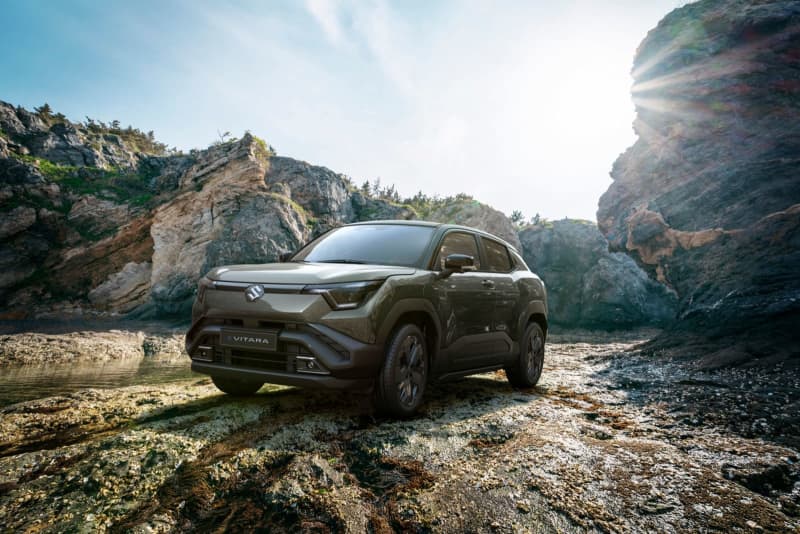Suzuki has unveiled its inaugural electric vehicle, the e Vitara SUV, marking a significant transition into the electric mobility arena. This new model features a design that is 100mm longer and has a 200mm extended wheelbase compared to its combustion-engine predecessor, which facilitates increased passenger space within the cabin. The production of the e Vitara will take place at Suzuki’s manufacturing facility located in Gujarat, India, positioning it for distribution across various international markets. The exterior design of the e Vitara incorporates modern aesthetic elements such as black plastic wheel arch guards and lower body moldings, contributing to its robust appearance. Additionally, a thoughtfully positioned charging flap on the nearside front wing enhances user-friendliness for charging. Other notable features include concealed rear door handles that contribute to a sportier profile and a distinctive rear design characterized by a full-width light bar adorning the tailgate.
The interior of the e Vitara has also received a complete makeover, showcasing updated vertical air vents and a sleek two-spoke steering wheel. A key highlight is the integration of a digital driver’s display fused with the central touchscreen, showcasing a modern and streamlined technological approach. This emphasis on usability is evident with the inclusion of physical buttons for climate controls and a floating center console, enhancing driver and passenger experience. With this design overhaul, Suzuki aims to create an inviting atmosphere that aligns with contemporary consumer expectations in the automotive sector, especially for electric vehicles.
For performance specifications, the e Vitara will offer consumers a choice between two battery options. The standard model is equipped with a 49kWh battery that powers a front-mounted electric motor capable of producing 142bhp and 189Nm of torque. For those seeking more power, the mid-level and flagship variants will have a larger 61kWh battery paired with a more robust electric motor that generates 172bhp. This range in battery options indicates Suzuki’s commitment to providing flexibility and catering to diverse customer preferences. Additionally, there will be a four-wheel-drive version that includes an additional electric motor situated on the rear axle, collectively producing a total power output of 181bhp and 300Nm of torque, although specific performance metrics and electric range remain to be disclosed.
Toshihiro Suzuki, the president of Suzuki, expressed the company’s dedication to achieving a carbon-neutral society through the introduction of the e Vitara. He emphasized that this electric vehicle represents a culmination of extensive development efforts aimed at creating an accessible and user-friendly electric vehicle for their clientele. Furthermore, Suzuki plans to provide a comprehensive array of vehicle options—encompassing battery electric vehicles, hybrid models, and internal combustion engines—tailored to the specific demands of different regions. The launch of the e Vitara symbolizes a pivotal milestone in Suzuki’s ongoing pursuit of sustainability and innovation in the automotive industry.
While pricing details have not been officially announced, market analysts speculate that the starting price for the e Vitara in Europe could be around €35,000 when production is set to commence in mid-2025. This pricing strategy will play a critical role in positioning the e Vitara within the competitive electric vehicle market, especially as consumer interest in affordable yet reliable electric options continues to grow. Suzuki’s foray into the electric vehicle space with the e Vitara highlights its adaptability and readiness to meet evolving market demands while also aligning with global sustainability goals.
In conclusion, the launch of the Suzuki e Vitara SUV represents a significant step forward for the manufacturer as it embraces the electric vehicle revolution. The combination of innovative design, enhanced passenger space, versatile battery options, and a commitment to sustainability reflects Suzuki’s strategy to remain relevant and competitive in the automotive landscape. As the world increasingly shifts towards electric mobility, the introduction of the e Vitara demonstrates Suzuki’s proactive response to consumer needs and environmental concerns, signaling a new era for the brand in electric transportation.

